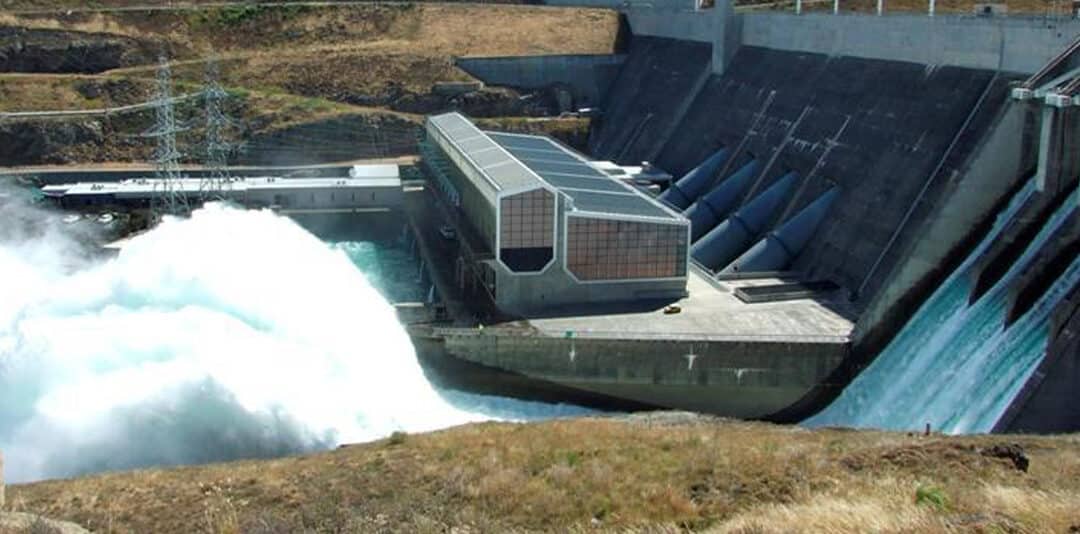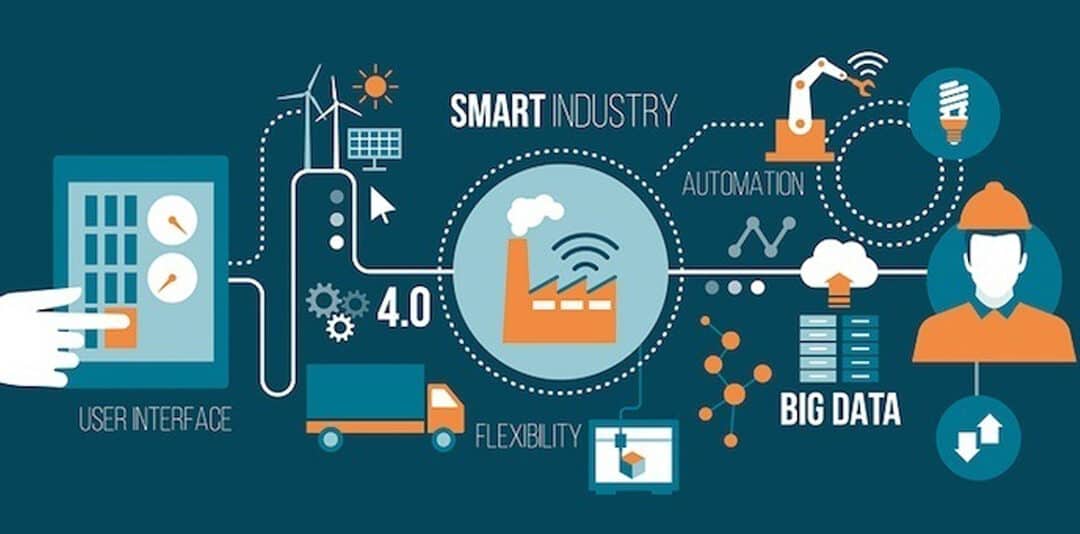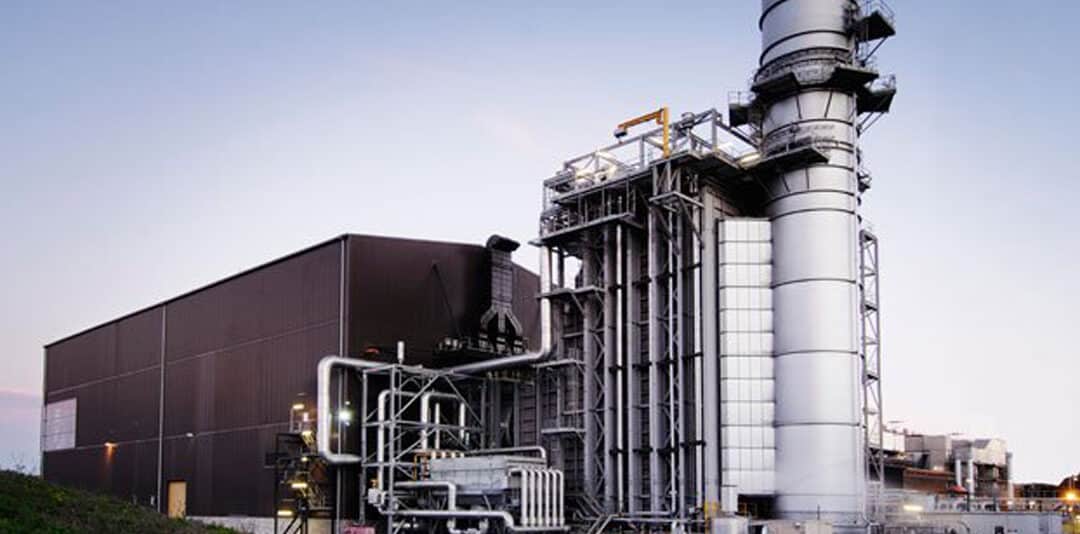
by chris | Dec 5, 2017 | Energy
Cost reduction in the energy market through procurement has been relatively easy in the last few years. Flat national demand, solid hydro storage, increased retailer competition and participation in the ASX market has led to competitive commercial contracts that have allowed many customers to save money without changing what they are doing.
While an immediate impact, it is not sustainable. Fixed price contracts are typically only 2-3 years in length and only relate to +/- 65% of a total bill, changes in transmission and distribution pricing is passed through at cost by the retailers and these costs are non-contestable.
In recent weeks, hydro storage has dropped for the second time this year to low levels which has driven large increases in Spot and ASX future pricing. Spot pricing through June moved well above the long term average, peak daytime periods were regularly priced at between 15-20c/kWh or more. While the South Island hydro storage lakes recovered in August from the dry winter, there has been little rain during spring which has meant that water inflows have been below 70% of average levels. It is not uncommon for Spot to bounce around at this time of year due to scheduled maintenance of thermal generators and other transmission related work, however the lack of South Island rainfall and the longer term NIWA forecasts are concerning. Over the last couple of weeks it has been like déjà vu as Spot pricing escalated to day time peaks of above 20c/kWh. 2017 is shaping up to be one of the more volatile years in recent history. Both ASX futures and Spot prices are lead indicators to over the counter retail pricing, pricing can change quickly and for customers who maybe engage with the market once every 2-3 years as contracts end, if the timing is wrong it can lead to significant price increases.
 With New Zealand’s energy market so heavily reliant on environmental factors for supply of fuel, it is not enough to rely solely on pricing being the same or better every time a customer needs to sign a new commercial supply contract. Nationally we have around 6 weeks of hydro storage, tiny in comparison to Iceland who have around 6 months backup. Needless to say, it does not take much for the market here to spike, a period of unseasonably dry weather combined with a cold snap, some thermal generation outages and transmission constraint issues all lead the market in one direction.
With New Zealand’s energy market so heavily reliant on environmental factors for supply of fuel, it is not enough to rely solely on pricing being the same or better every time a customer needs to sign a new commercial supply contract. Nationally we have around 6 weeks of hydro storage, tiny in comparison to Iceland who have around 6 months backup. Needless to say, it does not take much for the market here to spike, a period of unseasonably dry weather combined with a cold snap, some thermal generation outages and transmission constraint issues all lead the market in one direction.
Customers are asking us what else can be done to mitigate pricing risk in the future aside from securing competitive energy supply contracts. Utilities are a two way street, a symbiotic relationship between consumption and cost. If we take a strategic view, then time and effort needs to be directed at both sides of the coin.
We recently had a customer say, “It’s great when I can save 1-2 cents per kWh with a new contract, but for every kWh I don’t use, I save 10 cents. That’s where the real gold is hidden.”
Total Utilities has a range of energy management services that can assist customers identify sustainable energy savings. We can guide you through your energy efficiency journey from how and where to get started, device level energy monitoring and targeting to identify energy wastage, energy audits, solar viability analysis and system design, BMS optimisation and NABERNZ ratings though to implementation and post commissioning reviews.
Planning for efficiency now, can reduce cost risks in the future when commercial pricing increases. We’d welcome the opportunity to discuss with you what might be possible to ensure a commercially sustainable future.

by DavidSpratt | Jul 24, 2017 | Energy
The boundaries between physical, digital and biological worlds are breaking down — giving way to a new world of computer based business known as cyber-physical systems. These cyber-physical systems are characterized by the merging of physical, digital, and biological realms in profound ways. Artificial intelligence (AI) serves as the primary catalyst of this transformation.
Klaus Schwab, Chairman and Founder of the World Economic Forum wrote:
We are at the beginning of a revolution that is fundamentally changing the way we live, work, and relate to one another. In its scale, scope and complexity … the fourth industrial revolution is unlike anything humankind has experienced before.

We have all heard this kind of hyperbole before. So why should this matter and what are local companies doing to address the issues?
Beyond hyperbole
It matters because we have already seen our lives changed by these tools in the most dramatic fashion. The last presidential election in the USA was directed affected by the use of AI.
These tools were used in identifying and directly addressing those electors who were undecided or felt strongly about key issues. These powerful compute engines, combined with good old-fashioned phone calls and door knocks, meant voters were either encouraged to vote by “people like them” who knocked on the door (e.g. young mum talking to young mum) or to not vote through messages directed directly to them about the futility of “rigged” elections.
Leveraging AI in the New Zealand Business Context
Politics and business are uneasy bedfellows so I will get back to the brief. How do Kiwi companies respond to international and local competitors who already understand and are leveraging artificial intelligence and bringing it to our competitive landscape?
Let’s start with energy. It is one of the most fundamental parts of any business. Most of us just focus on getting a cheap price for electricity or gas and then move on to running the enterprise day to day.
This approach just won’t work when machines are making the micro-decisions that can mean success and failure.
International Competition
Consider some of our major New Zealand computer companies. They are in a life or death struggle with public cloud providers like Microsoft, Amazon and Google. These gigantic multinationals have access to all the tools mentioned above and even deliver them “as a service” to companies everywhere. Competing with organisations like this is not just a question of having good people or getting the best price for inputs. It is about innovation and very, very careful monitoring of all the inputs and outputs, including energy.
One of the most brutally competitive battlegrounds is over the provision of data centre services to the business market. In the past ten years companies like Datacom and Spark have invested hundreds of millions of dollars in state of the art datacentres. These datacentres require huge amounts of energy to keep them running.
New Zealand’s advantage
New Zealand has a natural advantage because over 80% of our energy is created via renewable means. In the years ahead this advantage will become a cost and strategic advantage.
As the forth industrial revolution unfolds New Zealand’s energy advantage that will drive our strategic advantage in data centres. Don’t believe me? Microsoft recently announced that a key new measure for its Azure data centres was energy inputs to data outputs. Thus Microsoft has directly linked energy usage as a means to define its compute power efficiency in terms of services delivered.
So what are our Kiwi companies doing to compete on this stage? Both Datacom and Spark use tools like artificial intelligence to monitor, control and measure their energy inputs. Historically it was simply a case of installing a few sub meters and a cost calculator (macro energy measurements). Today these companies aim to measure and monitor right down to the lightbulb (micro monitoring). The rise of the internet of things has made this ability to micro monitor even greater. As new data centres and factories are being built across the country, architects are being required to include in their plans, tools and products that embed internet of things, artificial intelligence and micro monitoring in the very fabric of the design.
Companies building factories in this country that do not think of micro monitoring of energy use as a strategic tool should be reminded that in the last few decades we exported more manufacturing jobs overseas than we created in all of IT. Ignorance of the strategic possibilities of micro energy monitoring is wilful blindness in a world where the Fourth Industrial Revolution is not only upon us, it is rapidly transforming the competitive landscape we work in.

by pushkar | Jul 22, 2017 | Energy
Investment in energy monitoring has traditionally been dominated by lengthy CAPEX discussions and the technical specifications of proposed monitoring infrastructure which means spending more cash to find out where cost savings might be made. Little thought was ever given to the data output and associated software –most competing products delivered similar back end services and data displays which required users to export data to CSV format before being able to really interrogate it.
That’s changing with Panoramic Power smart sensors available now in New Zealand, through Total Utilities.

My colleague David, has previously written a series of articles regarding the rise of artificial intelligence algorithms and how major corporations are using these to exploit customer data and drive behavior. Data obtained from raw internet traffic, page clicks, key search words and online transactions is now being structured by algorithms in order to deliver insights and show trends. Further to this, the data is normalised by user defined groups and then compared.
Smart recommendations for energy flows
If Amazon or Apple can recommend a book or record that I might like, why can’t my energy monitoring software make recommendations? And if the data is all I really need, why should I have to purchase a very expensive metering asset that may only be required for 12 months? Of if my usage pattern changes why can’t I quickly adjust my monitoring setup?
Total Utilities encounter clients every day who operate energy intensive equipment, while the type of equipment varies greatly from production and manufacturing applications, cold storage, and commercial buildings, the issues remain the same. Clients need real time visibility of where energy is being used so that they can make strategic decisions and act quickly to save money.
Further to this, they need to know when energy intensive systems are under stress and may require attention outside of their normal maintenance cycle. They want the ability to see their energy flow within their site in various graphical formats and to be able to benchmark their HVAC or compressors across multiple facilities.
Total Utilities use Panoramic Power’s IoT (Internet of Things) sensor technology and cloud based analytics to help customers understand energy consumption.
Fast to install, fast to get benefits
Worldwide there are eight billion data points per month across 800 sites in 30 countries. With more being added in New Zealand every week.
Forty smart meters were installed in 1.5hrs at an Auckland CBD site the week before last and fifty were installed in 2hrs at a site in West Auckland on Friday. Each sensor is clamped onto the outgoing electrical wires of a customer’s distribution board. This eliminates expensive wiring, investment in new panels, lengthy shutdowns, IT connections and reduces health and safety risks. Once installed, it monitors the flow of electricity, sending information wirelessly to the cloud-based analytics platform every ten seconds.
With such an ease of install combined with effective data presentation and representation, potential energy savings can be identified quickly by pinpointing specific areas for further investigation. It took less than two days for Total Utilities to identify that the lighting of a commercial building was switching on at 2am and running for two hours every morning despite the BMS (Building Management System) showing all lights were off. Simple measures were implemented quickly which means the energy monitoring system has already paid for itself.
While the above is a relatively rudimentary and common example, Total Utilities can just as easily correlate key variables such as chiller temperature against outdoor temperature on a monthly, daily and hourly basis across multiple sites located throughout NZ without the need for pain staking manual calculations. We then deliver clients meaningful information and advice quickly so they can act and make significant energy savings.
Total Utilities believes that traditional energy meters are merely becoming a means to an ends as clients engage us for the value we create with intelligent data and analytics.

by chris | Jul 11, 2017 | Energy
The calls for a 100% renewable energy market in NZ are often met with large amounts of criticism, “We are 85% renewable already”, “Thermal back up is required for periods of drought and low wind”, “Going 100% renewable will only increase prices as more generation will be required” etc etc etc.
Quite frankly, this is an outdated way to think of the market based on large scale generation models and long distance transmission.
New Zealand in transition
Unlike most other countries, NZ is well positioned to further reduce reliance on thermal generation, given our geography, population spread and isolated energy system i.e. we are not importing or exporting electricity to other countries like many do in Europe or North America.
A good first step could be to remove thermal baseload generation from the market, in recent time this has been achieved with Otathuhu closing in 2015, much of the “slack” was taken up by new and efficient running of Geothermal stations.
But how do we take this further, how do we remove the requirement for Huntly et al while still retaining large users such as NZ Steel and Rio Tinto?
Battery Storage and the New Zealand network
From my perspective the largest potential lies in battery storage whether it be fixed assets or leveraging the electric transport fleet in years to come.
If generators / network companies considered either installing large scale industrial batteries at remotely located or congested sub-stations or operating networks of small scale batteries installed across thousands of residential homes, massive amounts of money would be saved by not having to build new hydro dams or geothermal plants.
Ever increasing costs of maintaining such a large transmission and distribution system for such a small population is surely a compelling event for infrastructure owners to invest in new technologies and new business models to sustain revenue into the future. If we apply Moore’s law to batteries, they will half in price and double in capacity in the next 18 months which should see them become extremely viable.
Considering the above, the case for thermal becomes much less compelling.
Examples from abroad
In recent times, Germany has made huge steps to curtail the reliance on thermal generation with numerous renewable generation initiatives. The following article was written by Yaniv Vardi, CEO of Panoramic Power and highlights a number of valuable points that New Zealand might take on board.
In a world facing pressing challenges from climate change and rising carbon emissions, entire countries are becoming laboratories to test potential solutions. Nowhere is this truer than in Germany, where their aggressive plans to address climate change, encoded in the ambitious Energiewende, call to phase out nuclear and carbon-based energy sources and invest in renewable energy sources – such as solar and wind.
The Energiewende plan envisions a non-nuclear Germany that cuts its carbon emissions by 80% by 2050. As lofty a goal as this may be, the plan is on pace to meet and even exceed benchmarks. Even though not everyone is on board, and some claim the Energiewende is overzealous and could strangle business in favor of pushing an unrealistic energy policy, progress well underway.

What is the Energiewende, and what has it done so far?
The Energiewende is a sweeping plan for “the full-scale transformation of [German] society and the economy” along the lines of renewable energy. Passed in 2010 in its most recent form – but with social and political roots that stretch back 20 years prior – the Energiewende schedules a complete phase-out of nuclear-generated energy by 2022, an 80% cut in carbon emissions by 2050 and supports additional investment in renewable technologies such as wind and solar.
The Energiewende has three main components: proliferation of renewable energies, reduction or compete phase out of nuclear- and carbon-based energy sources and increased energy efficiency. Germany is well on its way to completing these goals successfully and in a timely fashion. Currently, the first two components are well underway, while early progress has been made toward heightened efficiency. By 2014, 27% of German electricity was generated by renewable sources. Since 2011, Germany has halved its consumption of nuclear energy and shut down nine of its 17 nuclear reactors.
On its surface, the Energiewende appears to be working. It doesn’t mean, however, that the policy isn’t free of critics. Some have vocalized sharp critique, casting doubt on the viability of the energy plan. But do these arguments hold water?
The continuing energy debate
Not everyone is sold on the promises of the Energiewende. Some, like economist Heiner Flassbeck, argue that an energy system primarily supported by wind and solar, without any aid from nuclear sources or fossil fuels, is ultimately not tenable.
Flassbeck’s critique is related to what critics call “the intermittency problem,” that wind and solar don’t always generate electricity at reliable levels. If the renewable sources fail to produce enough energy to meet the nation’s demand, and Germany successfully phases out all nuclear- and carbon-based energy sources, there would be no fallback to generate the additional energy needed. Critics say removing that backup would be a crucial mistake.
However, proponents argue that intermittency can be solved with greater grid connectivity – geographical diversity, they suggest, should often balance out any shortages – and the development of better storage technologies. At present, wind energy must be used as it is generated; if cost-effective storage methods emerge, the intermittency of wind power becomes less of a concern.
In addition, alternative sources have proven themselves to be sufficient. Just last year, German solar power providers generated so much electricity that they actually had to pay to offload it. And while naysayers may declare this the product of a ham-fisted public policy that actually dims the long-term viability of commercial energy production, the fact that there’s enough clean energy production to bring this hypothetical conflict to life, is itself encouraging.
Energiewende critics also raise concern about inflated electricity costs. In Germany, utilities are required by law to pay energy producers that sell back to the grid. Those payments are set at fixed, above-market prices, which utilities pass on to consumers in the form of a surcharge on their electric bill. As a result, German consumers experience higher than average energy costs. In 2016, the surcharge amounted to 22.1%.
In the U.S., consumers pay less per kilowatt hour, a fact favored by critics of Germany’s energy policy. Despite the heightened electricity rates, German consumers are still widely in favor of the Energiewende. More than 80% of respondents of public opinion polls said they were in favor of a low-carbon and nuclear-free economy. Higher energy costs, it seems, do not deter the Germans in their bid for a cleaner energy system.

Toward a viable, national energy management model
Despite critics’ appeals to hold tight – at least for the time being – to the nuclear- and carbon-based status quo, Germany’s energy efficiency policy is making a compelling case study for a more sustainable model.
The methods may be bold, but they seem to be working. Germany reduced greenhouse gas emissions by 27% and produced 27.4% of its electricity from renewable sources. Renewable energy made up 13.5% of the market as well – all while shuttering nuclear facilities and growing the overall economy by 1.9% (the fastest rate in the G7).
While Germany is phasing out non-renewable energy sources like coal at a slower pace than nuclear energy, the Energiewende is setting the stage for a new system founded on renewable energy technologies. As storage methods improve and proliferate, and distribution networks become more connected, the problem of intermittency should become less and less burdensome – in other words, high-producing regions will be able to support low-producing regions.
While the Energiewende is aggressive bordering on single-minded, it has already demonstrated its viability as an energy system capable of supporting an advanced, forward-thinking economy. Even as the German policy has implemented drastic changes in a relatively short amount of time, the German economy has continued to grow unabated. If the world is serious about combating climate change and meeting the targets of the Paris climate accord, Germany’s Energiewende is a model to emulate, not dismantle.
Yaniv Vardi is the CEO of Panoramic Power, a leader in device level energy monitoring and performance optimization

by Jon Rabinowitz | Jun 9, 2017 | Energy
The focus of the recent Energy Management Association of New Zealand (EMANZ) conference held in Wellington centered on disruptive technologies and how this would impact the traditional models of the energy supply chain. While presentations focused mainly on generators, distributors and retailers, customers also need to consider how emerging technology can drive strategic decision making when it comes to the consumption of energy.
The installation of smart metering over the last few years throughout New Zealand has assisted mainly companies that generate, distribute and retail energy with very little benefit being delivered to customers. In the retail space we are starting to see the application of time based pricing for SME customers but retail pricing products in this space remain in their infancy as the attitude of traditional suppliers appears to be a wait and see approach.
One thing is for certain, data will play a massive role in the future structure of energy supply and customers who control their data will be steps ahead of those that don’t. We truly believe that customers who take a proactive strategic approach to measuring consumption beyond the data available on their invoices (whether it be energy, ICT or waste) will have a competitive advantage in their market place compared with businesses who don’t.
The below article was written by Jon Rabinowitz, Head of Marketing – Panoramic Power, while US-centric there are strong commonalities that apply to the market in NZ. If your business would like to discuss how energy can become a strategic lever for competitive advantage, Total Utilities would welcome the opportunity to meet with you. Contact us here.
(more…)

by RichardGardiner | May 25, 2017 | Energy, ICT, Waste
Intelligence without ambition is a bird without wings.
Drawing is the honesty of the art.
Salvador Dali
Today Total Utilities announces its new branding. Over the last 18 years we have worked hard to assist companies in controlling consumption and cost. It’s an exciting day for us and we are proud to share this with you.
From today you’ll see a change in the way we look, including our new ribbon logo. The spherical shape represents the whole as we take a 360 degree approach to understanding our clients and their utility requirements, whether it be Energy, Waste and ICT or Insights, Strategy and Solutions.



What doesn’t change is our desire to create a sustainable future for New Zealand businesses and how they manage their utilities by continuing to deliver ongoing value for our clients.
We continue to work hard to provide new services to assist our clients such as Energy Monitoring and Targeting through wireless non-intrusive energy senors, Cloud Computing Analytics for consumption of computer services and qualitative and quantitative reporting aligned to overall financial strategy.
Total Utiltities About Us Presentation
We remain committed to delivering a personalised service and assisting our clients navigate a rapidly evolving commercial market place by underpinning strategic thinking.
I would like to thank our existing clients for your continued loyalty and confidence in our company. To prospective clients, I hope that you will partner with us to discover real world solutions for sustainable utility consumption and cost optimisation.

 With New Zealand’s energy market so heavily reliant on environmental factors for supply of fuel, it is not enough to rely solely on pricing being the same or better every time a customer needs to sign a new commercial supply contract. Nationally we have around 6 weeks of hydro storage, tiny in comparison to Iceland who have around 6 months backup. Needless to say, it does not take much for the market here to spike, a period of unseasonably dry weather combined with a cold snap, some thermal generation outages and transmission constraint issues all lead the market in one direction.
With New Zealand’s energy market so heavily reliant on environmental factors for supply of fuel, it is not enough to rely solely on pricing being the same or better every time a customer needs to sign a new commercial supply contract. Nationally we have around 6 weeks of hydro storage, tiny in comparison to Iceland who have around 6 months backup. Needless to say, it does not take much for the market here to spike, a period of unseasonably dry weather combined with a cold snap, some thermal generation outages and transmission constraint issues all lead the market in one direction.











